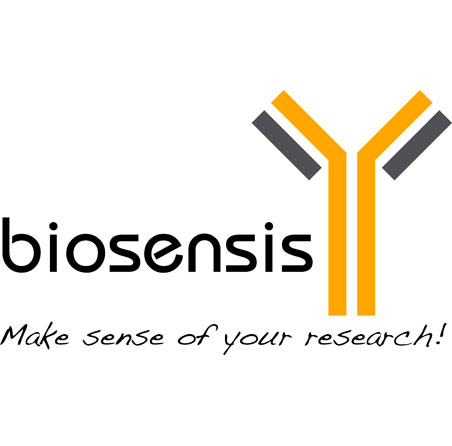Phagocytic glycoprotein 1 (PGP-1, CD44), Rabbit Polyclonal Antibody
As low as
US$427.00
Only %1 left
Catalog Number
R-1721
- Product Name Phagocytic glycoprotein 1 (PGP-1, CD44), Rabbit Polyclonal Antibody
- Product Description Rabbit anti-Phagocytic glycoprotein 1 (PGP-1, CD44) Polyclonal Antibody (Unconjugated), suitable for WB.
- Alternative Names CDw44,Epican,Extracellular matrix receptor III,ECMR-III,GP90 lymphocyte homing/adhesion receptor,HUTCH-I,Heparan sulfate proteoglycan,Hermes antigen,Hyaluronate receptor,Phagocytic glycoprotein 1,PGP-1,Phagocytic glycoprotein I,PGP-I,CD_antigen: CD44
- Application(s) WB
- Antibody Host Rabbit
- Antibody Type Polyclonal
- Specificity Human CD44
- Species Reactivity Human
- Immunogen Description A synthetic peptide corresponding to a sequence at the C-terminus of human CD44 cytoplasmic domain aa 728-742. The immunogen differs by only single amino acid between human, mouse and rat proteins.
- Conjugate Unconjugated
- Purity Description Affinity purified over peptide
- Regulatory Status For research use only.
Product Info
- Product Description Rabbit anti-Phagocytic glycoprotein 1 (PGP-1, CD44) Polyclonal Antibody (Unconjugated), suitable for WB.
- Application(s) WB
-
Application Details
WB: Western blot: reduced RIPA samples or membrane preparations (0.1-.5 µg/mL) dependent upon antigen load and antibody incubation times and detection substrate used.
IH: frozen or acetone fixed tissue: 0.5-1.0 ug.mL, permeabilization is necessary as epitope is internal
IH(P): 1-2 µg/mL with HEIR treatment required.
- Target Phagocytic glycoprotein 1 (PGP-1, CD44)
- Specificity Human CD44
- Target Host Species Human
- Species Reactivity Human
- Antibody Host Rabbit
- Antibody Type Polyclonal
- Antibody Isotype IgG
- Conjugate Unconjugated
- Immunogen Description A synthetic peptide corresponding to a sequence at the C-terminus of human CD44 cytoplasmic domain aa 728-742. The immunogen differs by only single amino acid between human, mouse and rat proteins.
- Sequence DETRNLQNVDMKIGV
- Purity Description Affinity purified over peptide
- Format lyophilized.
- Reconstitution Instructions Spin vial briefly before opening. Reconstitute vial in 0.2 mL sterile-filtered, ultrapure water. This will produce a final concentration of 500 µg/mL of antibody. Centrifuge to remove any insoluble material.
- Storage Instructions At -20°C for one year. After reconstitution, at 2-8°C for one month. It can also be divided into aliquots and stored frozen at -80°C for a longer time. Avoid repeated freezing and thawing.
- Batch Number Please see item label.
- Expiration Date 12 months after date of receipt (unopened vial).
- Alternative Names CDw44,Epican,Extracellular matrix receptor III,ECMR-III,GP90 lymphocyte homing/adhesion receptor,HUTCH-I,Heparan sulfate proteoglycan,Hermes antigen,Hyaluronate receptor,Phagocytic glycoprotein 1,PGP-1,Phagocytic glycoprotein I,PGP-I,CD_antigen: CD44
- Uniprot Number P16070
- Uniprot Number/Name P16070 (CD44_HUMAN)
- Scientific Background The protein identified as CD44 is also known as the receptor for hyaluronic acid (HA). The protein mediates cell-cell and cell-matrix interactions through its affinity for HA, and possibly also through its affinity for other ligands such as osteopontin, collagens, and matrix metalloproteinases (MMPs). Adhesion with HA plays an important role in cell migration, tumor growth and progression. In cancer cells, CD44 may play an important role in invadopodia formation, and it also is involved in lymphocyte activation, recirculation and homing, and in hematopoiesis. Altered expression or dysfunction of CD44 causes numerous pathogenic phenotypes. CD44 has great protein heterogeneity due to numerous alternative splicing and post-translational modification events. Biosensis' anti-CD44 rabbit polyclonal antibody is a new antibody made against a synthetic peptide epitope near the very C-terminus, cytoplasmic domain of human CD44. The antibody has been shown to react with multiple species including human, mouse and rat, in both western blot and immunohistochemistry applications including formalin fixed, paraffin embedded tissues. See applications detail for specific use instructions.
- Shipping Temperature 25°C (ambient)
- UNSPSC CODE 41116161
- Regulatory Status For research use only.

 1800 605-5127
1800 605-5127 +61 (0)8 8352 7711
+61 (0)8 8352 7711
